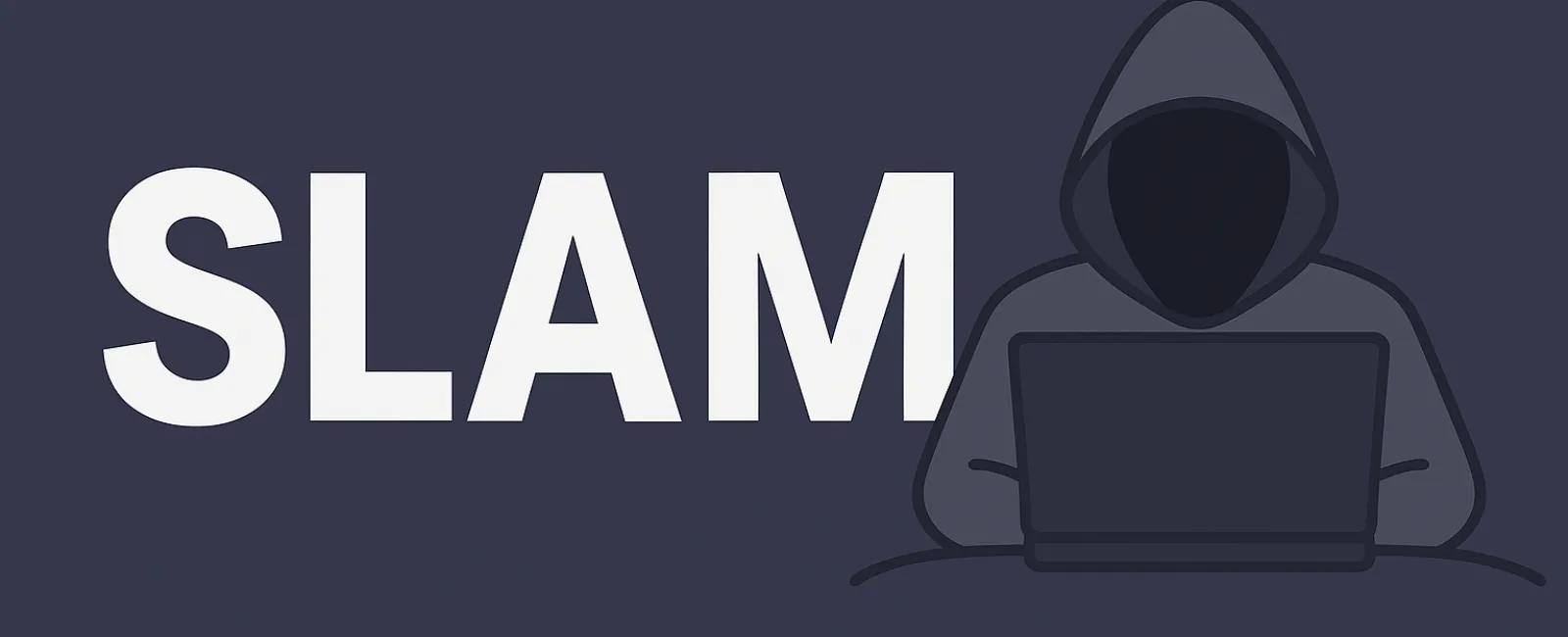August 18, 2025
Every day,
hackers send out over 3 billion phishing emails. These messages might look like
invoices from vendors, password reset notices, or even urgent messages from
your CEO. And all it takes is one wrong click to unleash ransomware, compromise
sensitive data, or bring your business to a standstill.
So how can your team stay protected?
Enter the SLAM Method, a simple, effective anti-phishing framework that anyone
can use to evaluate an email and spot red flags before falling into a trap.
Whether you're a managing partner at a law firm or the office admin at an
insurance agency, SLAM gives you the confidence to defend your inbox.
What Is the SLAM Method?
SLAM is an
acronym that stands for:
- Sender
- Links
- Attachments
- Message
Each letter represents a critical checkpoint you should review when evaluating
an email. It's easy to remember and powerful to use. Let's break it down.
S — Scrutinize the Sender
At first
glance, an email might appear to come from someone you know or trust. But
cybercriminals love to impersonate executives, clients, or major brands using
deceptive email addresses.
What to Look For:
- Hover over the display name to reveal the actual sender address.
- Watch out for slight misspellings: e.g., john@micros0ft.com instead of john@microsoft.com.
- Check the domain: is it legitimate or suspicious?
Real Example:
You receive an email from 'Microsoft Support' asking you to verify your account.
The display name says Microsoft, but the actual sender is security@microsoft-support.co.
Looks legit, until you realize Microsoft's real domain is just microsoft.com.
L — Hover Over the Links
Phishing emails
often use links that look legitimate but secretly redirect you to malicious
sites that steal your login credentials or download malware.
What to Do:
- Hover over all links (don't click!) to see the destination.
- Double-check the domain name.
- If in doubt, visit the website manually.
Real Example:
An email claims to be from DocuSign asking you to 'Review and Sign' a document.
The link reads https://docusign.com/secure,
but when you hover, it actually points to http://docusign-review.com/login.php. That's not DocuSign.
A — Be Wary of Attachments
Hackers love to
disguise malware as common document types: invoices, resumes, reports. One
click and your system is compromised.
What to Watch:
- Was I expecting this attachment?
- Don't open unsolicited attachments.
- Be cautious of .zip, .exe, .scr, and macro-enabled Word/Excel files.
Real Example:
A message from 'Accounts Payable' includes a file named Invoice_Q3.zip. The email sounds urgent:
'Please process immediately to avoid late fees.' But you weren't expecting an
invoice, and the sender isn't familiar.
M — Analyze the Message
Phishing emails
often contain psychological tactics: urgency, fear, authority to rush you into
acting without thinking.
What to Watch:
- Spelling and grammar mistakes.
- Odd or inconsistent tone.
- Urgent requests or threats.
Real Example:
"Hi, it's [CEO Name]. I need you to wire $25,000 to a vendor right away. I'm in
a meeting and can't talk—just get it done now."
But the tone seems off, there's no signature, and it doesn't sound like your
CEO. It's likely a CEO impersonation scam.
SLAM in Action: What You
Should Do
Now that you
understand the SLAM method, here's how to apply it when you suspect something
isn't right:
1. Stop - Don't reply, click, or open anything yet.
2. Inspect using SLAM - Review Sender, Links, Attachments, and Message.
3. Report - Forward the email to your IT or security team.
4. Delete - Once confirmed suspicious, move the email to your spam or trash.
5. Alert your team - One phishing email is often followed by others.
Why SLAM Works for Every
Employee
- Simple and
fast - Takes seconds to use once it's second nature.
- Empowers users - Your team becomes the first line of defense.
- Reduces risk - Just one click avoided can save tens of thousands of dollars.
Phishing isn't just an IT issue; it's a human behavior issue. By embedding SLAM
into your workplace culture, you turn every employee into a cybersecurity
sentinel.
Final Thoughts: Train Like
It's Real
At Automates,
we help businesses like yours stay ahead of threats with phishing simulations,
employee training, and 24/7 managed cybersecurity support. But tools alone
aren't enough, education is key.
Teach SLAM. Practice SLAM. Live SLAM.
It could be the difference between a minor inconvenience and a full-blown
breach.
Ready to Strengthen Your
Defenses?
Let us help
your team master SLAM and stay resilient.
Click here or give us a call at (619) 304-2068 your FREE 15-Minute Discovery Call today.
From the desk
of:
Tommy
Thornton
Automates,
CEO





